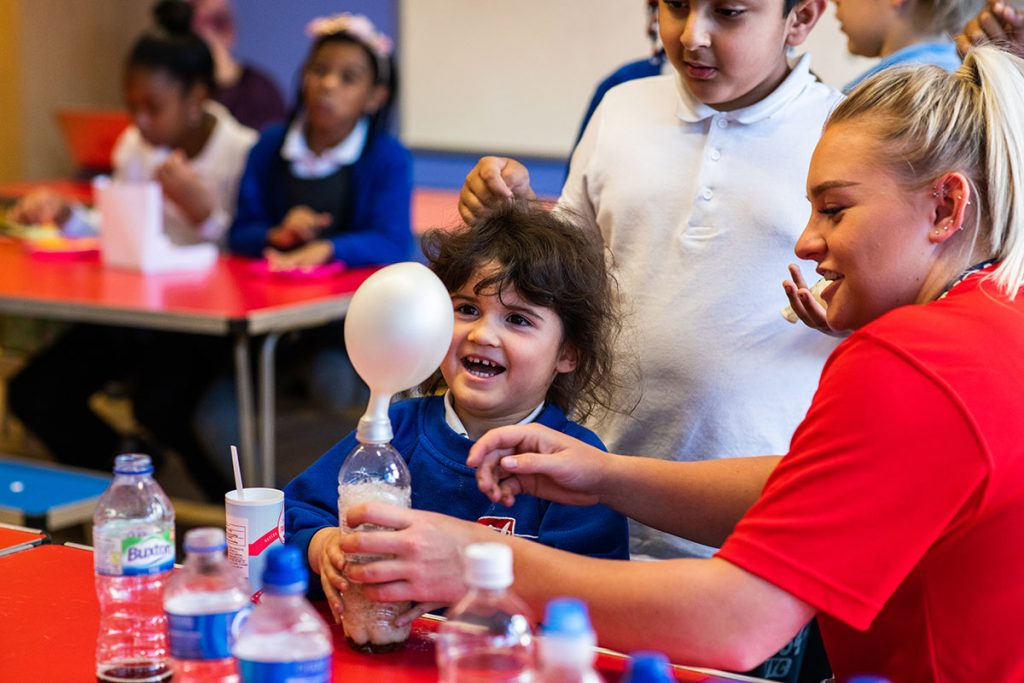We all know that school education is an important part of a child’s growth and development. However, school does not suit every child; some might find the structure hard to navigate, the academic references nonsensical, or the format of learning difficult to understand.
STEAM learning is an alternative method for mastering the subjects of science, technology, engineering, nursing, art, and mathematics. It involves hands-on projects and practical activities, relating abstract concepts to real life situations, so that children can see exactly how these important subjects relate to the every day.
Our Play Leaders wrote this handy guide to STEAM learning, so you know exactly what we get up to at our Before and After School Clubs:
What is STEM/STEAM Learning?
Before STEAM, there was STEM. STEM learning used activities that encourage knowledge of everyday problem solving and critical thinking. STEM then became STEAM, including the art and design discipline and promoting the creative aspects of learning, the importance of imagination and the empowering process of artistic thinking.
The change came after experts began advocating the importance of creativity alongside scientific critical thinking. In her article ‘Creating a Head of STEAM’, Royal Holloway’s Professor Kate Normington highlighted how Leonardo da Vinci had brought art and science in Renaissance Italy.
She said: “It appears that, even within contemporary times, those at the forefront of innovation have been merging arts and science practice.”
Pomeroy notes that ‘Nobel laureates in the sciences are seventeen times likelier than the average scientist to be a painter, twelve times as likely to be a poet, and four times as likely to be a musician’, making reference to the works of science news writer, Steven Ross Pomeroy, who shares the same views in a 2012 essay of his own.
As is pointed out on the STEAM website, it is important to teach young people that nearly all of the great inventors and scientists were also musicians, artists, writers or poets, so as not to undermine the importance of creativity in society. Galileo was a poet and literary critic; Einstein was a passionate student of the violin; Samuel Morse was a portrait painter. You can find out more about these incredible STEAM figurehead inspirations on the official STEAM website: https://www.steamco.org.uk/why
Why is STEAM Learning Important?
STEAM helps young people to navigate the world around them using problem solving and a combination of creative and analytical thinking. By using STEAM assisted learning from a young age, children will be able to understand how these subjects apply to the real world and be able to apply their practical functions.
Many of the jobs that effect our economy include STEAM subjects. Accounting, architecture, medical research, and environmental studies all involve science, technology, engineering, art and mathematics. Each discipline of STEAM helps your child grow and navigate through everyday challenges, and helps so support and provide context to the academic learning that they do in the classroom.
Eddie Kemsley, CEO at KidZania London, an interactive child-sized city where kids can ‘Learn by Doing’, said: “Jobs in real life are interdisciplinary and would rarely require the use of just one subject. For example, a video games developer needs imagination and creativity as well as excellent IT skills.”
STEAM at YMCA Childcare
At our clubs, we provide children with engaging activities which keep their minds, bodies and spirits healthy. We have access to our own fantastic childcare areas with lots of space both indoors and outdoors for creative activity and play. This space allows us to deliver a fantastic range of activities including crafts, indoor and outdoor sports like soft archery, dodgeball, football and STEAM sessions.
Children will take part in interactive activities and will have the opportunity to discuss what careers could be available within these fields. We want children to see what is possible for themselves and what they can achieve in the future.
Activities that focus the STEAM disciplines help children learn through trial and error by experimenting and problem solving. Some of our brilliant STEAM activities include: Crystal and slime making, den building, Lego building challenges and drawing architecture plans, mask making, bottle rockets, growing plants, making circuits, making star maps, counting and addition games with toys, making bottle rockets, creating tie dye crafts, painting with acrylics and oils, and SO much more!
Our Play Leaders strive to be positive role models for the children, working to create a positive and safe learning environment that supports the children in building their confidence, enhancing their education and enjoying the time they spend with us.
We are always looking for volunteers to come into schools to teach children about STEAM fields! If you or anyone you know would like to lead a session and help to inspire the next generation of scientists, artists, and engineers, please get in touch by emailing childcare@nottsymca.org.
Find out more about our childcare programme here: http://bit.ly/ChildcareMain
